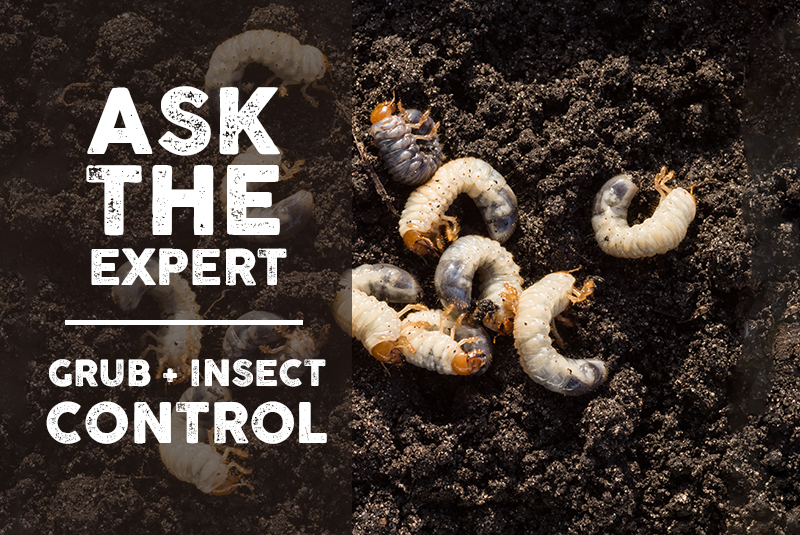This year many parts of the US, specifically the Midwest and Northeast, have seen higher than normal levels of rain. It’s been a very wet spring and because of this, we’ll need to be ready to combat an uptick of grub and insect infestations. Prevention and early control are key to making sure your customer’s lawn looks good all season long.
In the past, we introduced 3-in-1 solutions of fertilizers plus Imida Lambda. These multi-solution products can dramatically reduce the labor you use for your summer fertilizer and control applications. They’re a win-win, saving you time and money. We’re always on the outlook for new and better solutions to help you grow your business, and solutions for grub and insect controls are no different.
The conversation in our industry has changed dramatically this year with the glyphosate lawsuit against Bayer. The Green Industry is under a microscope with negative coverage in the media. This is causing homeowners to perk up and listen, and they’re becoming informed consumers. They now know safer, alternative options are available for all landscape and control products—and they’re willing to pay more money for them. Because of this, it is critical that you are offering multiple programs that will fulfill this demand, including traditional, low impact, and when applicable 100% organic.
We’ve asked John Huber, Central’s Sustainable Products Manager, to discuss the low environmental impact solutions available for grub and insect control. Stand out from the competition with options that your customers demand, but solutions that work just as well as traditional synthetic programs, at prices that won’t break your wallet.
From John:
Just like weed control, a healthy stand of turf that is properly maintained is your best defense against grubs and surface feeding insects such as chinch bug.
What makes organic-based programs different than 100% organic programs or traditional synthetic programs, is that organic-based uses the proper proportions of organic to conventional sources. This balanced formulation allows for all the right things to happen, keeping the plant and its cell walls healthy. When you practice a balanced carbon-to-nitrogen ratio through sound, proven organic-based programs, your turf will be healthier and better able to withstand a higher threshold of infestation versus a conventional program.
Promote Healthy Cell Walls
For example, if you over fertilize, especially in the spring, surge growth will occur and energy stores will be burned up quickly. With a balanced organic-based program, surge growth will be minimized. You won’t have elongation of the cell walls. What you will have is a tighter and denser cell wall that will help to protect from diseases, drought, and it will have a higher threshold level against grub and insect infestations.
Manage Water for Grub + Insect Control
Proper cultural practices can be very helpful in the control of grub and insect infestations as well. Turf that is heavily irrigated in June and July will create optimal conditions for grubs. There are several varieties of grubs and they can have life cycles ranging from 1 to 2 years depending on the variety. If you can break the life cycle of the grubs and promote a healthier stand of turf, you can avoid the use of chemical controls. You cannot control the weather and the amount of rainfall, but you can control the irrigation. Watering less frequently and applying enough precipitation when you do water will go a long way in helping control grub and insect populations.
Conversely, chinch bugs are attracted to dry turf with a heavy thatch layer. When you practice a balanced C:N ratio with organic-based turf programs you are stimulating the living soil which in turn will significantly reduce thatch and allow for more light and air circulation at the soil surface. Proper watering will keep turf from getting too dried out and discourage chinch bugs from taking over. As an added bonus, it will also help to control the spread of turfgrass diseases.
Educate Your Customer
It’s good practice to set a realistic expectation with your customers and educate them on the signs of grub and insect damage so you can catch problems early on and hopefully remedy before too much damage occurs. Chemical controls should be a last resort and they aren’t 100% effective but they can be a great tool in reducing the grub and insect population to the point where the damage is unnoticeable.
Central’s solutions from Hudson Valley Natural offer affordable, low impact, sustainable solutions for controlling grubs and insects in turf and landscape. HVN fertilizer solutions promote a healthier plant through sound agronomic, organic-based fertilizer programs that will reduce conditions that are optimal for grubs and insects. Contact your local Central Turf & Irrigation Supply sales representative today to learn more about Hudson Valley Natural products, solutions, and services.
About John Huber
John Huber is Central’s Organic and Sustainable Products Manager. John started out in the Green Industry as a grower of nursery plants. John launched his own landscape company and successfully built his business into the first organic-based turf management company in south eastern Virginia.
More recently, John worked in fertilizer manufacturing using organic ingredients that increased efficiency, and delivered numerous plant health benefits not found in today’s conventional fertilizers. John brings a wealth of knowledge in sustainable solutions. And with his leadership, Central Turf & Irrigation Supply will provide the stewardship to lead The Green Industry forward, into a new era of sustainability.

